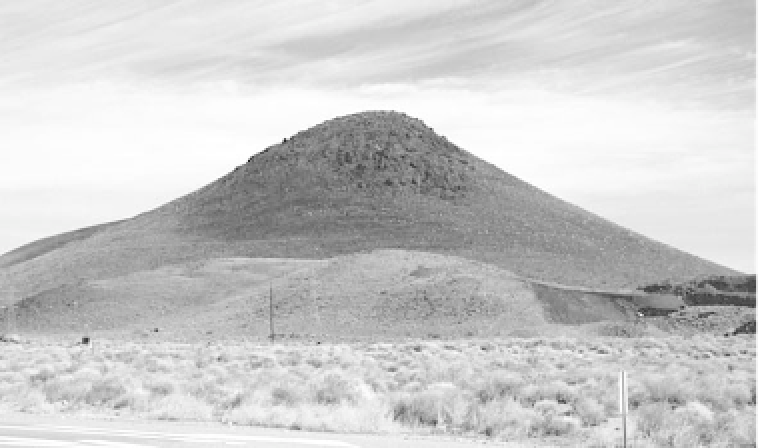Geology Reference
In-Depth Information
Runny (low viscosity) lava spreads out over a large area,
while sticky (high viscosity) lava oozes out and spreads
very little. Mixed-eruption volcanoes combine explosive
phases with phases of lava production. Pyroclastic rocks
that fall to the ground from eruption clouds are called
tephra
(from the Greek for ashes), while both lavas and
pyroclastic rocks that have a fragmented, cindery texture
are called
scoria
(from the Greek for refuse).
( ) Scoria cone
a
()Tuff ring
b
Pyroclastic volcanoes
50 m
Explosive
or
pyroclastic volcanoes
produce fragments
of lava that accumulate around the volcanic vent to
produce scoria mounds and other topographic forms
(Figure 5.4; Plate 5.3). Pyroclastic flows and the deposits
they produce are varied.
Tephra
is a term covering three
types of pyroclastic material of differing grain size. Ashes
are particles less than 4 mm in diameter, lapilli (from the
Italian for 'little stones') are between 4 and 32 mm in
diameter, and blocks are larger than 32 mm. The main
types of pyroclastic flow and their related deposits are
shown in Table 5.1. Notice that two chief mechanisms
trigger pyroclastic flows: (1) column collapse and (2) lava
flow and dome collapse. The first of these involves the
catastrophic collapse of convecting columns of erupted
()Tuff cone
c
Figure 5.4
Pyroclastic volcanoes. (a) Scoria cone. (b) Tuff
ring. (c) Tuff cone.
Source:
Adapted from Wohletz and Sheridan (1983)
material that stream upwards into the atmosphere from
volcanic vents. The second involves the explosive or grav-
itational collapse of lava flows or domes.
Pumice
contains
the most vesicles (empty spaces) and blocks the least.
Plate 5.3
Cinder cone, Mono Craters, California, USA. Cinder cones are the simplest of volcanoes. They are built of
cinder that falls around a vent to form a circular or oval cone, no more than 300 m or so high, usually with a bowl-shaped
crater sitting at the top.
(
Photograph by Kate Holden
)

















